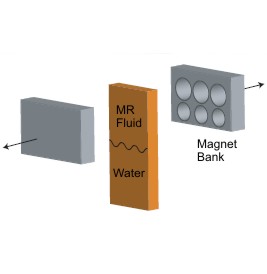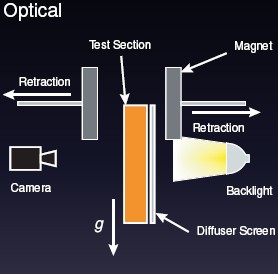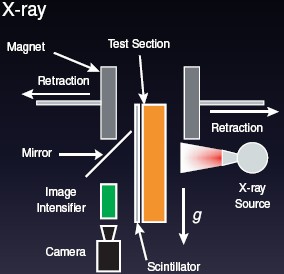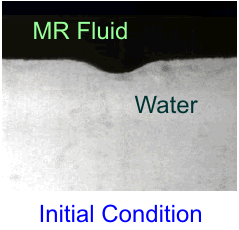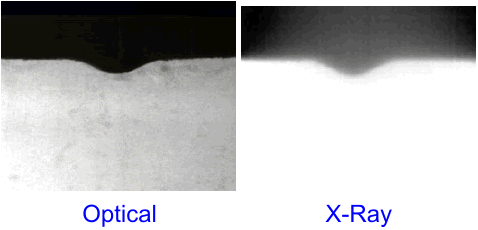
|
|
|
 |
|
Rayleigh-Taylor Instability Using Magnetorheological FluidsA challenge in experimentally studying the Rayleigh-Taylor instability is to achieve a well-characterized interface geometry without the use of a separating membrane. These experiments utilize a magnetorheological (MR) fluid which exhibits supermagnetism. This property allows the material to be held static in a magnetic field of sufficient strength, and is then free to flow as a liquid when the field is removed. The MR fluid is prepared by dispersing carbonyl iron particles (10-6 m in diameter) in mineral oil or hexane and particle agglomeration is minimized with the addition of a minute amount of surfactant. Depending on the volume fraction of iron particles and the carrier fluid, the density of the MR fluid may be chosen from the range &rhoH=[1.8 ... 2.7] kg/m3. To prepare an interface with a prescribed perturbation, water is placed in a test section with a sinusoidal mold, frozen, the mold is removed, MR fluid is poured on top of the ice, a magnetic field is applied, and the ice is melted. Two banks of round, permanent magnets are used to hold the interface shape until the experiment commences at which time the test section is flipped and the magnet banks are retracted. The instability is diagnosed optically or with X-rays using the experimental setups shown below. Originally, the optical technique was used and measurements were limited to the spike growth since a thin film of opaque MR fluid remained on the test section walls obscuring the observation of bubble growth. The X-ray technique allows for spike and bubble growth observation and also provides a way to obtain density field measurements in addition to the geometrical ones.
Images from experiments with a single perturbation, or bump, on the interface are shown below. This MR fluid over water experiment has an Atwood number of moderate magnitude, A=0.46, and this density ratio of heavy and light fluids is defined as A=(&rhoH-&rhoL)/(&rhoH+&rhoL). The growth of the spike tip is observed with both the optical and X-ray techniques. The optical technique provides much better contrast; however, the X-ray technique reveals the characteristic roll-up at the spike location along with the lighter fluid pushing up, or bubbling, into the heavy fluid on each side of the spike.
|

